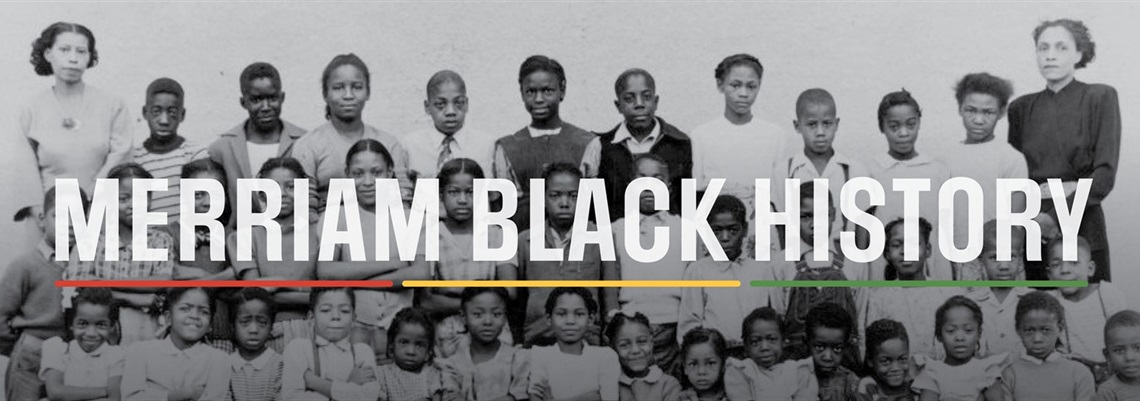
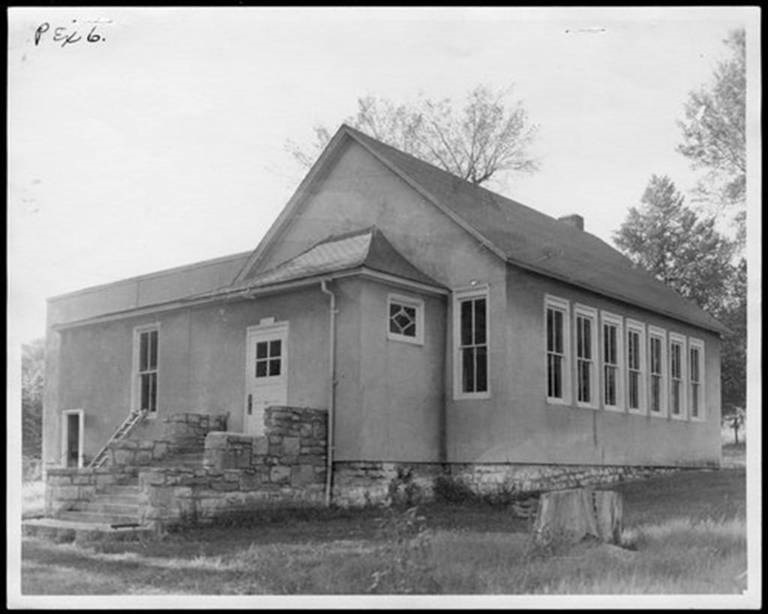 The Madam C.J. Walker School is one of Merriam’s most well-known historic sites. The school was built in 1888 at 9420 W. 50th Terrace after Johnson County organized School District 90. Black and white children went to the school until around 1900 when the school district began separating the students based on race, and the South Park Grade School was built for white students.
The Madam C.J. Walker School is one of Merriam’s most well-known historic sites. The school was built in 1888 at 9420 W. 50th Terrace after Johnson County organized School District 90. Black and white children went to the school until around 1900 when the school district began separating the students based on race, and the South Park Grade School was built for white students.
In 1947, the school district built a new South Park Grade School for white students using taxpayer funds. Black students had to continue attending the Walker School. The 44 Black students who remained in the two-room schoolhouse experienced inferior conditions, including poor lighting, bad heating, and outdoor plumbing. Parents appealed the segregation to the school board and Johnson County Court. Their appeals were denied.
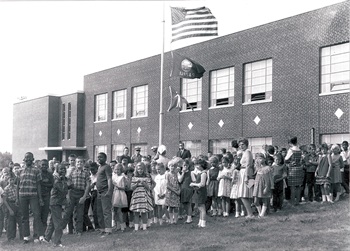
In 1948, the Walker School families filed a lawsuit, Webb v. School District No. 90, with the help of local activist Esther Brown. As the lawsuit made its way through the court system, the families boycotted the Walker School. Known as the Walker School Walkout, teachers Corinthian Nutter and Hazel McCray-Weddington taught students in private homes and at Mt. Olive Baptist Church for a year.
In 1949, the Kansas State Supreme Court upheld a state law prohibiting segregation in small towns, ruling in favor of admitting Black children to South Park School. The case is considered an important forerunner to the landmark 1954 Brown v. Board of Education of Topeka lawsuit, which would make school segregation illegal nationwide.
The former Walker schoolhouse still stands today and is now the Philadelphia Missionary Baptist Church.
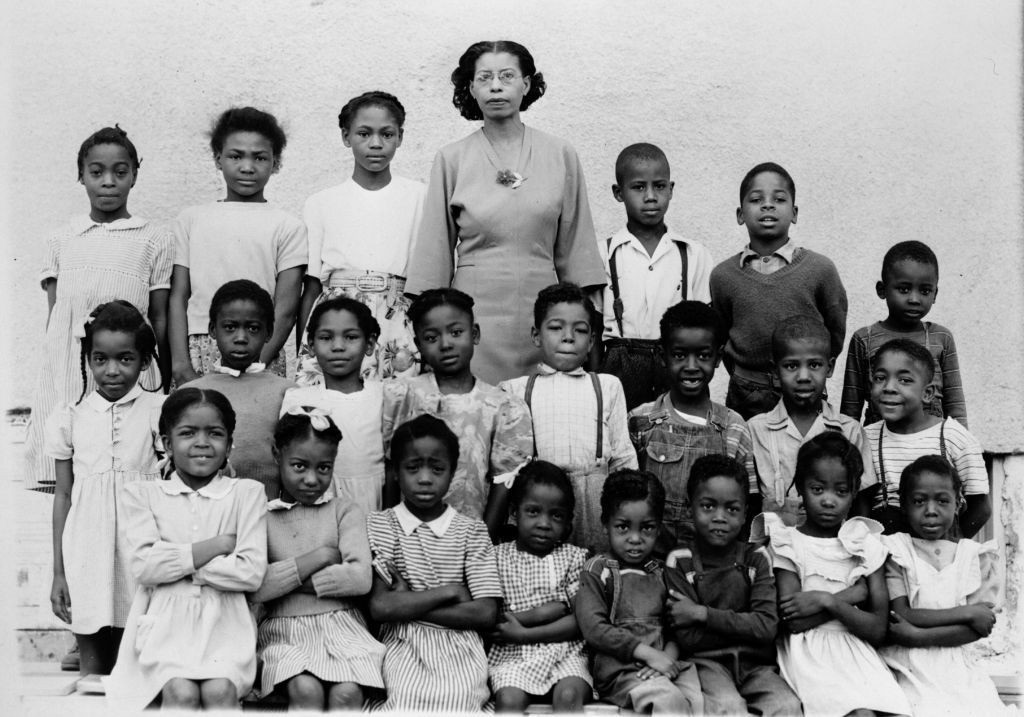
Below is an excerpt of Corinthian Nutter’s comments regarding desegregation at South Park School:
"I am the willowy daughter of a former slave. I ran away from home at age 15 to pursue an education in the North. When the time came, I sacrificed my hard-won teaching position to boycott the dilapidated all-black schoolhouse where I once taught in South Park. The one-room Walker Elementary School, with an outhouse on the playground, had been separate from the town's white school for more than 60 years and equal for none of its students. Black parents lost their patience when the town's school board refused to let their children attend the new, modern school on the hill – a school built in part with black tax dollars. During the boycott, I did not want the children to suffer in the wake of being pulled from school, so I agreed to teach 39 children in my home, parents' living rooms, and in the basement of Mt. Olive Baptist Church. I was a teacher in the classroom, that's all. And, education was for the children, not for a color. I was paid a stipend each month from the NAACP, but I would have done it for nothing. The lawsuit was an opportunity to stand up for equal rights in education. I just told them the truth. The school was dilapidated. We had no modern conveniences, had to go outside to go to the toilet - schools shouldn't be for color. They should be for the children."
South Park was founded in 1887 as an integrated community. By 1900, four Black families settled into the town of 250 residents. South Park continued to grow and was annexed into Merriam in 1957.
The Webb Family
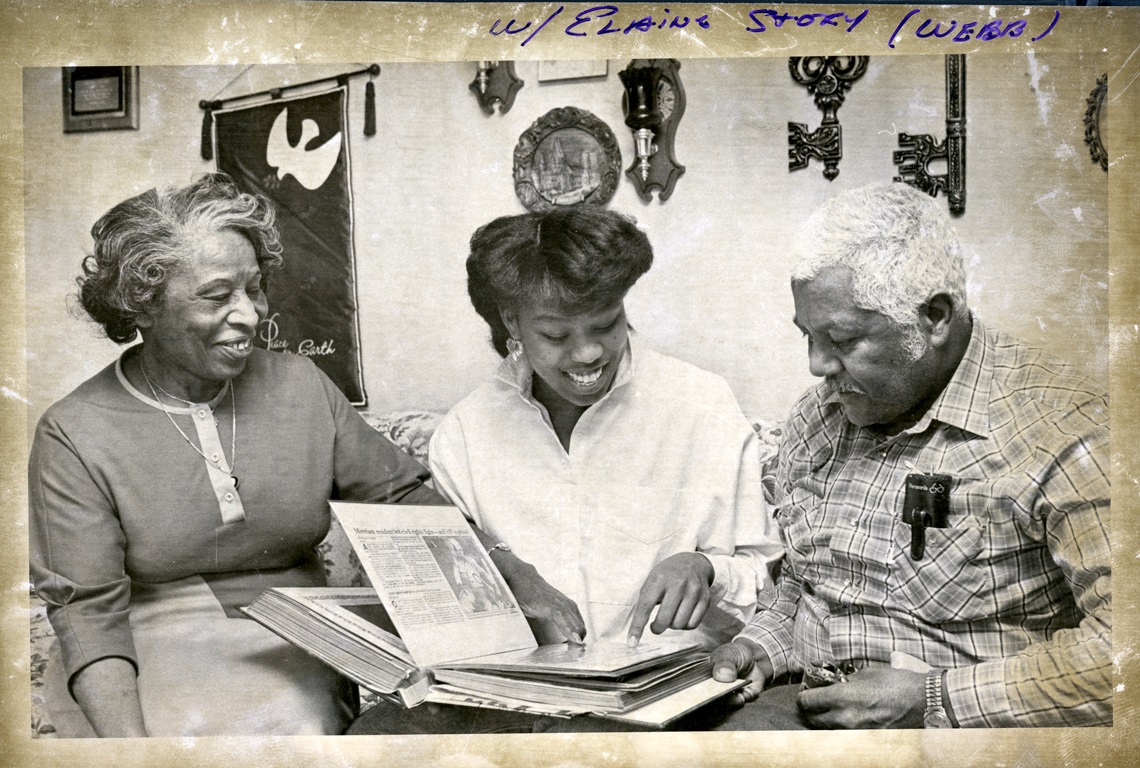 Alfonso and Mary Webb lived in South Park about a decade before their lawsuit, Webb v. School District No. 90, was filed. Alfonso’s parents were early settlers in the neighborhood. By the 1940s, South Park boasted more than 40 African American families and was an integrated community. The Webbs had 10 children. They were active in the South Park Community Club and attended Mt. Olive Baptist Church.
Alfonso and Mary Webb lived in South Park about a decade before their lawsuit, Webb v. School District No. 90, was filed. Alfonso’s parents were early settlers in the neighborhood. By the 1940s, South Park boasted more than 40 African American families and was an integrated community. The Webbs had 10 children. They were active in the South Park Community Club and attended Mt. Olive Baptist Church.
In May 1948, Alfonso filed a lawsuit with the Kansas Supreme Court in the name of his sons, Harvey and Alfonso Webb Jr., second and first-grade students at Walker School. The lawsuit demanded that Black students be admitted to the new South Park School. “Separate but equal” was custom during this time period, and the Webb family sought to challenge it with their lawsuit due to the poor conditions of Walker School. Their court case opened new educational doors for their children, some of whom continue to live in the South Park community in Merriam.
Esther Brown
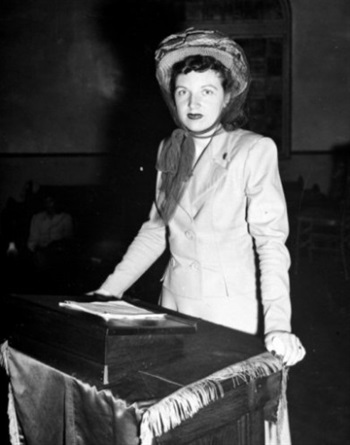 The Webbs and other African American families continued to press the school board for updates to the Walker School throughout the spring of 1948, but the board was unyielding. South Park resident Esther Brown, a white Jewish woman, heard about the struggle. Brown immediately threw her aid behind the South Park families. Her repeated attempts to push the school board to action yielded nothing but racist jeers and threats from the board and meeting attendees.
The Webbs and other African American families continued to press the school board for updates to the Walker School throughout the spring of 1948, but the board was unyielding. South Park resident Esther Brown, a white Jewish woman, heard about the struggle. Brown immediately threw her aid behind the South Park families. Her repeated attempts to push the school board to action yielded nothing but racist jeers and threats from the board and meeting attendees.
Esther organized support and worked tirelessly in their civil rights efforts. She helped them form a local chapter of the NAACP, filed a lawsuit against the school district, and organized the Walker Walkout. Esther went on to help with the landmark 1954 Brown v. Board of Education of Topeka case.
Merriam dedicated a city park in Esther’s honor in the South Park community. Brown Memorial Park is located at 5040 Booker Drive. A plaque in her honor reads in part: “Esther E. Brown organized citizen support in South Park for litigation leading to the 1949 Kansas Supreme Court order admitting Black children to the South Park School and to nearby high schools. Her actions encouraged similar litigation, resulting in the U.S. Supreme Court landmark decision declaring school segregation unconstitutional. With active support from many South Park residents, she overcame resistance to her civil rights advocacy in 1948-51 at great personal sacrifice.”
Sources: Historic Merriam and the Johnson County Museum
Johnson County’s First NAACP Branch
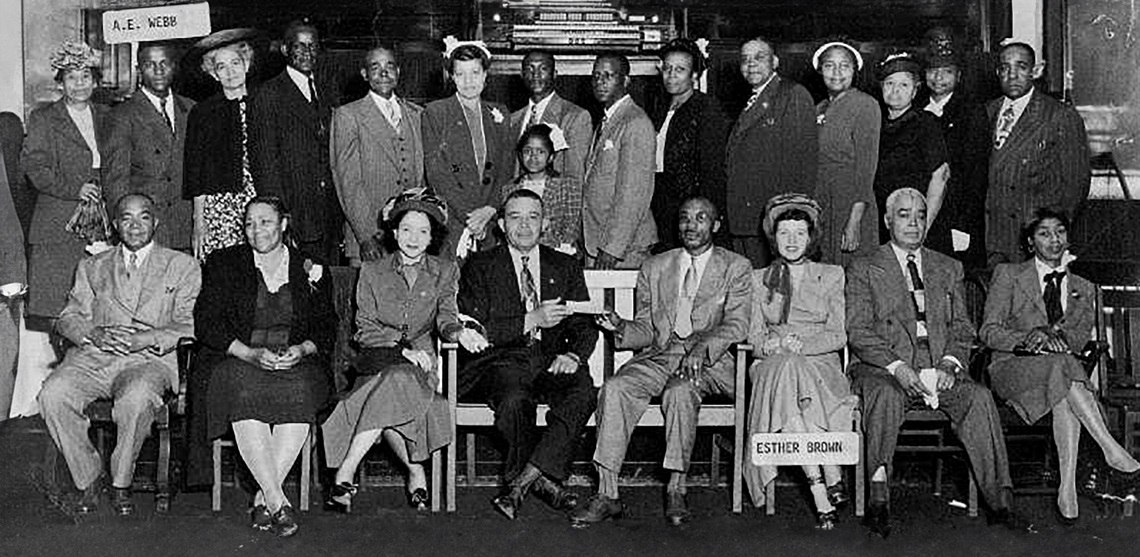 Black families in South Park organized Johnson County’s first branch of the National Association for the Advancement of Colored People. Esther Brown, Helen Swan, and Alfonso Webb helped form the group from the South Park Community Club in January 1948. By organizing a local NAACP branch, the South Park families could receive financial support and legal aid from the national chapter.
Black families in South Park organized Johnson County’s first branch of the National Association for the Advancement of Colored People. Esther Brown, Helen Swan, and Alfonso Webb helped form the group from the South Park Community Club in January 1948. By organizing a local NAACP branch, the South Park families could receive financial support and legal aid from the national chapter.
The NAACP helped pay for the teachers’ salaries for the walkout students and provided lawyers for the Webb v. School District No. 90 lawsuit. Among several NAACP lawyers who helped argue Webb’s case was future U.S. Supreme Court Justice Thurgood Marshall. Esther Brown and the NAACP made the continuation of the boycott and lawsuit possible for the South Park families.
Julius McFarlin
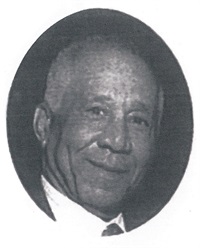
Julius McFarlin was the first African American elected to a political office in Johnson County, serving from 1973 to 2001 as Merriam's Ward 1 City Councilmember.
He’s also credited for chartering the Johnson County Branch of the NAACP, serving as its president from 1972 to 1998.
McFarlin and his wife, Marzella, were married for more than 70 years and had five children. He passed away in May 2015.
Carl Wilkes
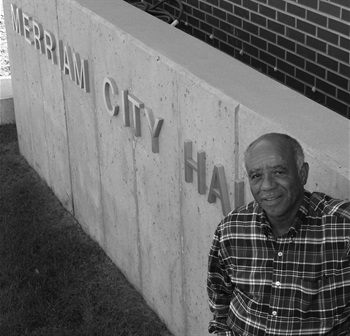 Merriam’s former mayor, Carl Wilkes, was a public servant for more than 40 years. Merriam residents elected him in 2001 as the first African American mayor in Johnson County, winning the election by two votes. He was sworn in as the 10th mayor of Merriam and served two terms, from 2001 to 2009.
Merriam’s former mayor, Carl Wilkes, was a public servant for more than 40 years. Merriam residents elected him in 2001 as the first African American mayor in Johnson County, winning the election by two votes. He was sworn in as the 10th mayor of Merriam and served two terms, from 2001 to 2009.
Wilkes was named a trailblazer by House Representative Dennis Moore in 2006 for his many contributions to the community.
Wilkes and his wife, Wanda, lived in Merriam for nearly six decades. He passed away in March 2023.
Sources: Historic Merriam and the Johnson County Museum
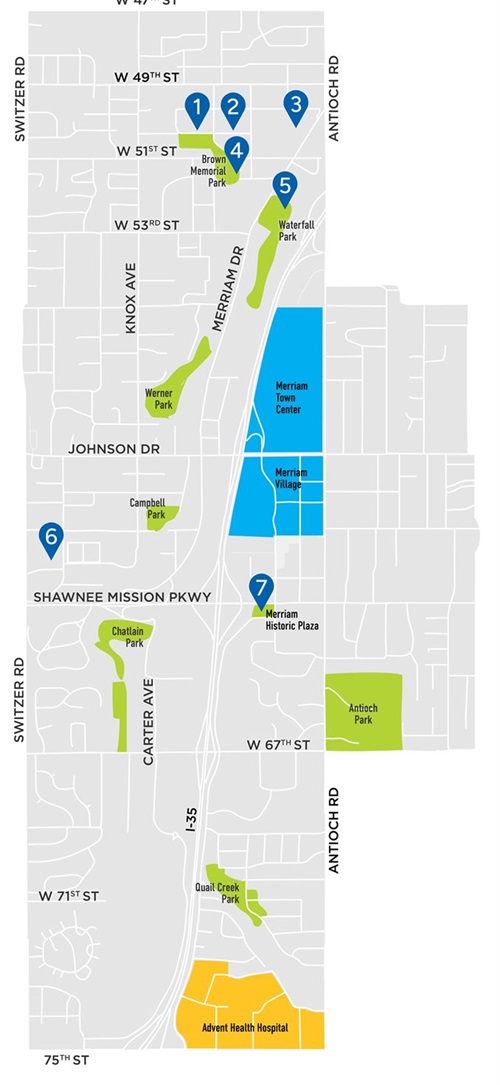 Take a tour across Merriam to learn about key moments in Black history within our Just Right city. This map identifies events, people, and locations that have played a vital role in shaping Merriam’s diverse community.
Take a tour across Merriam to learn about key moments in Black history within our Just Right city. This map identifies events, people, and locations that have played a vital role in shaping Merriam’s diverse community.
- Philadelphia Missionary Baptist Church, Former Madam C.J. Walker School
9420 W. 50th Terrace
The Philadelphia Missionary Baptist Church was established in 1961. It was formerly known as the Madam C.J. Walker School where Black and white students attended until 1900, when the school district began separating students by race. Black students attended Walker School until they were admitted to South Park Elementary after the Webb v. Johnson County School District No. 90 case in 1949.
- Mt. Olive Baptist Church
9220 W. 50th Terrace
In 1922, the Shiloh and First Baptist Churches in South Park united and established the Mt. Olive Baptist Church. The first pastor was J.R. Williams. Walker School teachers taught Black students for a year in the basement during the Walker School Walkout in 1948-1949.
- Crest Bible Church, Original South Park School
8715 W. 49th Terrace
The first South Park School burned down in 1902 but was rebuilt by the fall of the same year. In 1924, a stone school was constructed with four rooms, with a second floor later added. A new school was built in 1945 and became newsworthy with the Webb v. Johnson County School District No. 90 desegregation case. It became integrated in 1949. The school closed in 2006 when the new Merriam Park Elementary School was built. This building is now home to Crest Bible Church.
- Esther Brown Memorial Park
5040 Booker St.
This park is dedicated in memory of Esther Brown, a South Park resident who helped organize support and worked tirelessly in civil rights efforts. She helped Black families form a local chapter of the NAACP, organize the Walker School Walkout, and file the 1949 Webb v. Johnson County School District No. 90 lawsuit, a precursor to the landmark 1954 Brown v. Board of Education of Topeka case, which Esther went on to help with.
- Julius McFarlin Soccer Fields at Waterfall Park
5191 Merriam Drive
Waterfall Park features two practice soccer fields named after Julius McFarlin, the first African American elected to public office in Johnson County. He served from 1973–2000 as Merriam's Ward 1 City Councilmember. He’s also credited for chartering the NAACP Johnson County branch.
- South Park School Exhibit at Merriam Park Elementary School*
6100 Mastin St.
After the original Merriam School at 5820 Merriam Drive grew too small, a new school was built in 1911 at 5701 Merriam Drive. This location later became the Irene B. French Community Center. In 2007, Merriam Park Elementary School was built behind the original school. The old school and the remaining playground and parking lot were demolished. Inside Merriam Park Elementary is an exhibit on desegregation in South Park. *To arrange a viewing of the exhibit, contact the school at 913-993-3600.
- Merriam Historic Plaza
6304 E. Frontage Road
Merriam Historic Plaza features a 12-station paved walking path outlining the history of Merriam from pre-settlement to the present day. Sign #9 highlights the South Park community and the Webb v. School District 90 case. The plaza also includes the bear fountain sculpture Motherhood by artist Kwan Wu, a pollinator garden, and houses the Merriam Visitors Bureau office.